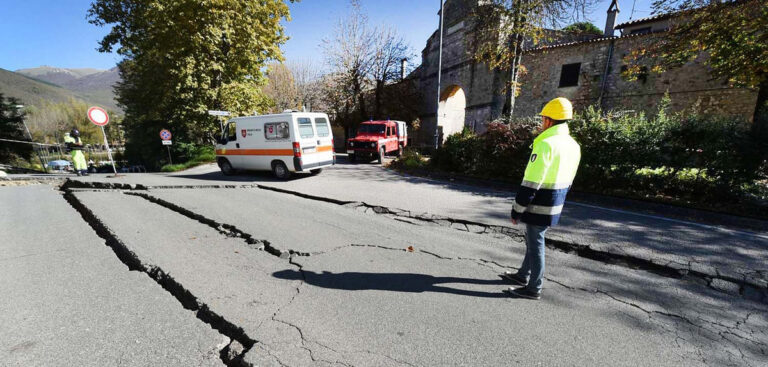Researchers have devised a model that they say can predict the rock movements deep underground that trigger earthquakes.
Earthquakes originate along fault lines far below Earth’s surface where extreme conditions can cause chemical reactions that affect the amount of friction rocks create as they move against one another.
Previous experiments have already established that when rocks are put under high pressure and moved against one another at speeds of 1m/s, the rocks’ surface either begins to turn into a sort of gel or to melt, massively reducing the coefficient of friction between them.
“In terms of ground movement, these speeds of 1m/s are incredibly fast,” one of the study’s co-authors, Manolis Veveakis, assistant professor of civil and environmental engineering at Duke University in North Carolina, told Science Daily. “And remember that friction is synonymous with resistance. So if the resistance drops to zero, the object will move abruptly. This is an earthquake.”
The Duke University model can predict how the coefficient of friction drops as the speed of the rock slippage increases for multiple types of rocks, thereby giving seismologists a better chance of predicting when an earthquake might be triggered.
The computational model does this by taking into account the energy balance of all the complicated mechanical processes that take place during fault movement, including the effect of heat on mineral decomposition, nano-particle lubrication and surface melting.
Because the model can be applied to so many different types of rock, the authors believe it is a general model that can be utilized in most situations.
Since scientists cannot fully recreate in the lab the intense pressure and heat environment present deep below ground, the researchers say their model can help scientists extrapolate to higher pressures and temperatures to get a better understanding of the conditions that build toward an earthquake.
“We still cannot predict earthquakes, but such studies are necessary steps we need to take in order to get there,” said Veveakis, whose paper on the model was published recently in Nature Communications.
“And in theory, if we could interfere with a fault, we could track its composition and intervene before it becomes unstable. That’s what we do with landslides. But, of course, fault lines are 20 miles underground, and we currently don’t have the drilling capacity to go there.”



